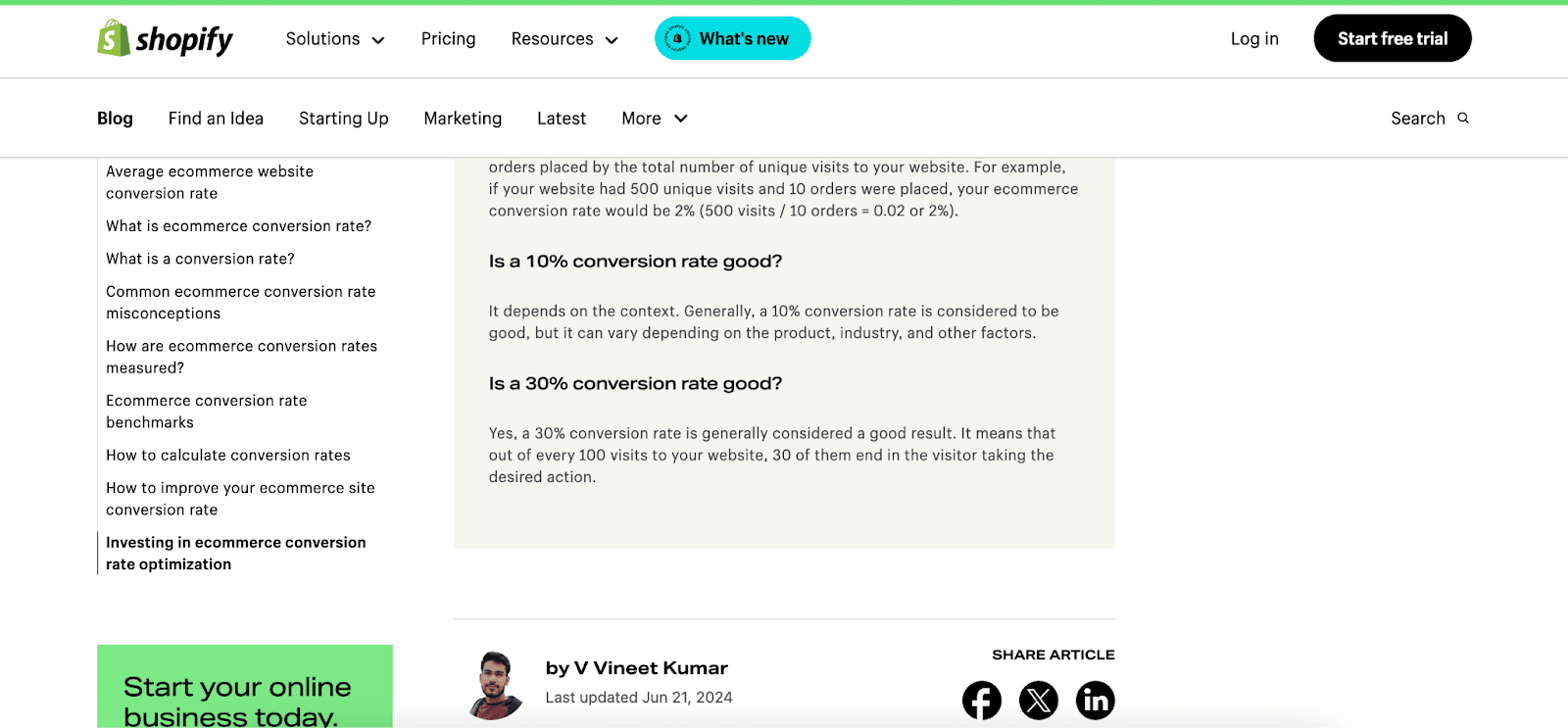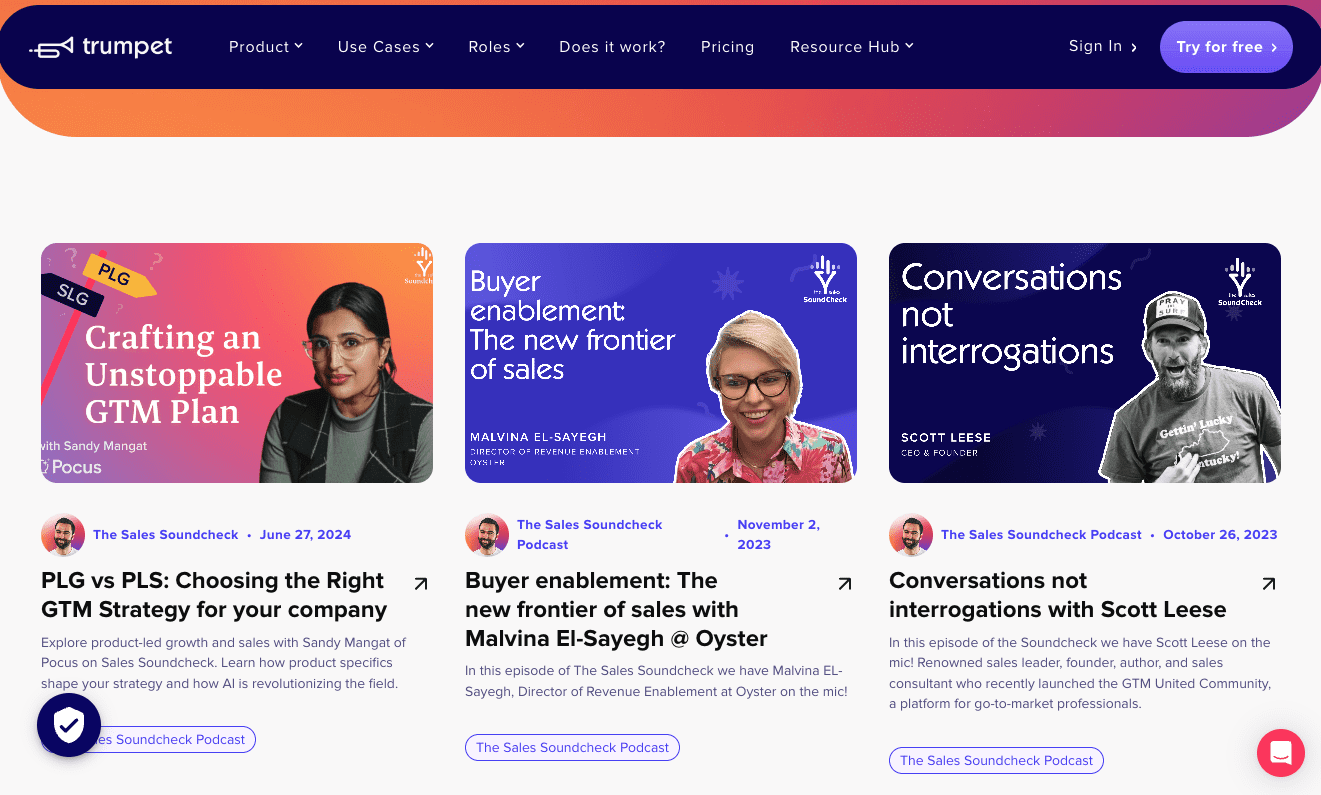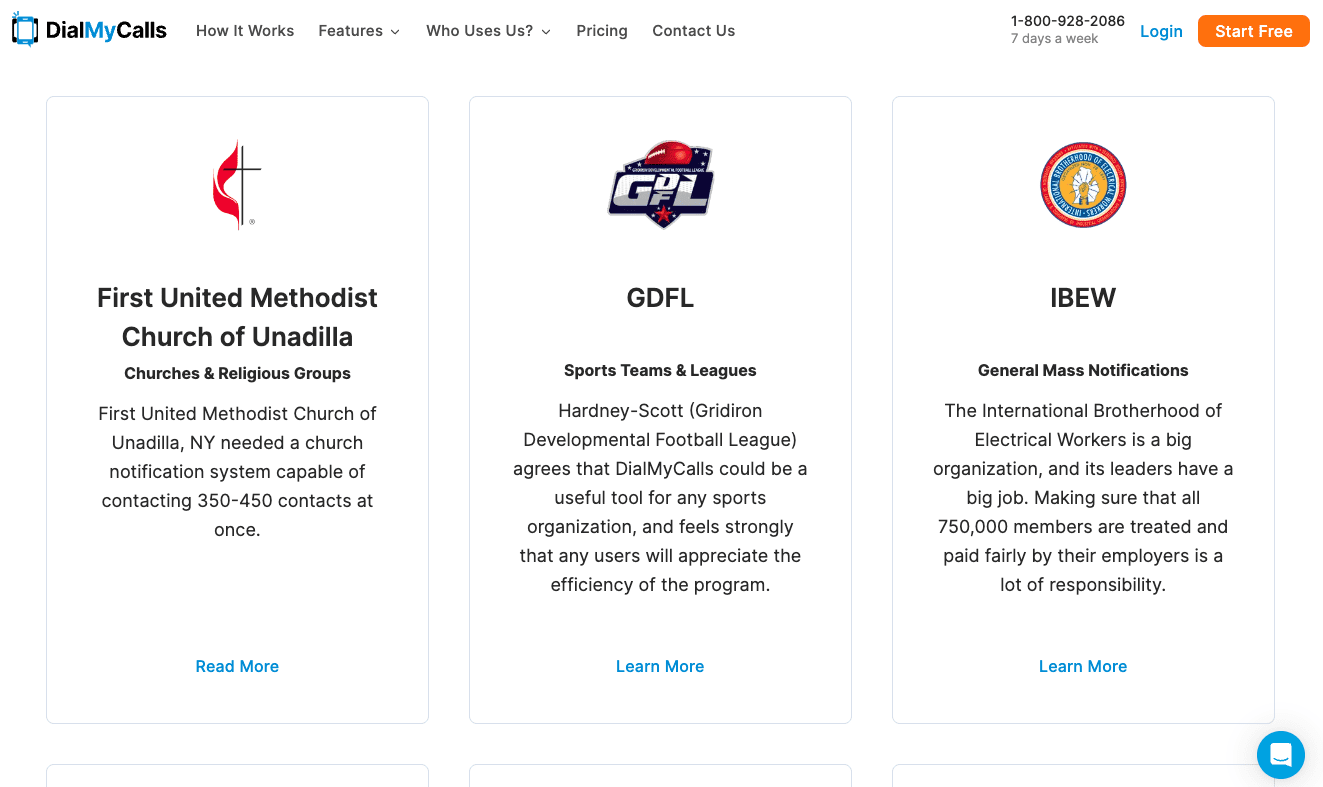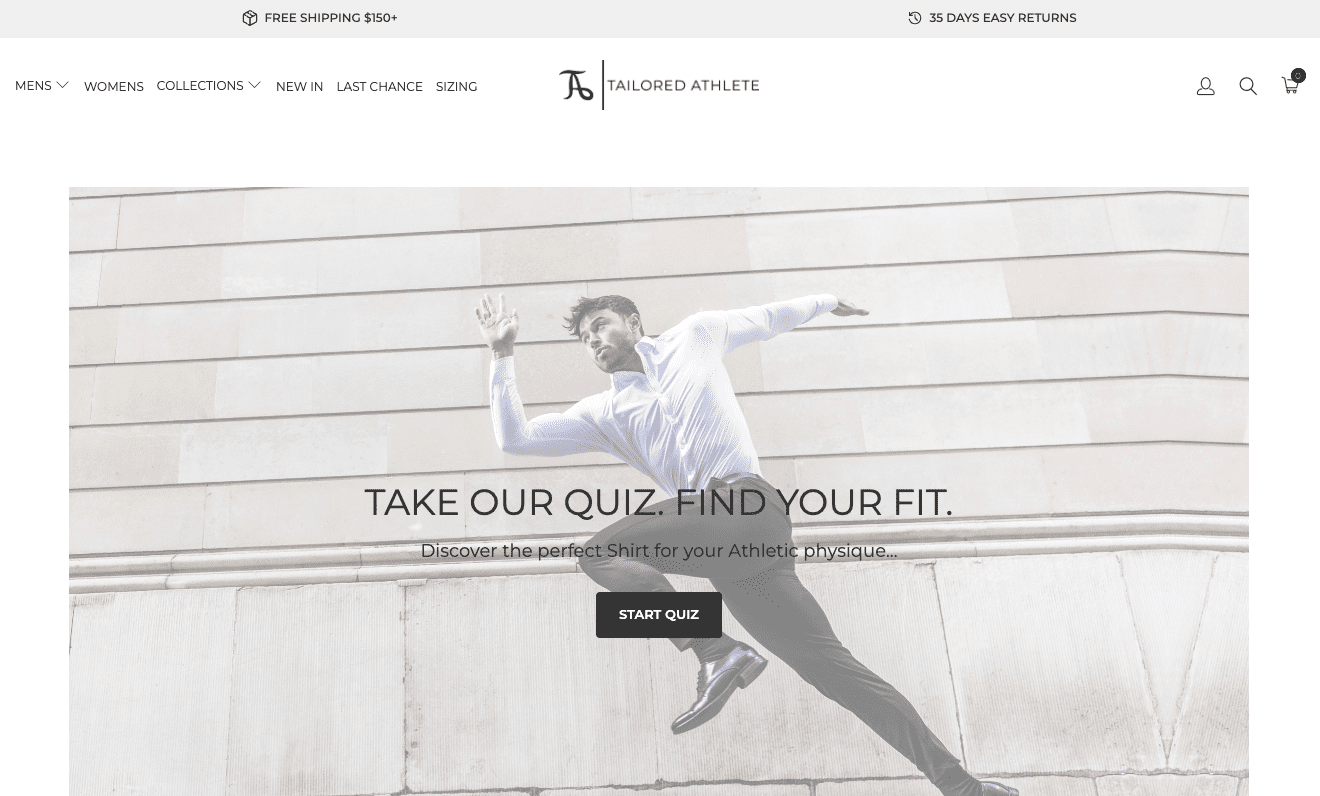Is your website truly effective at turning web visitors into customers? If more than 90% of your web visitors leave your site without converting into leads or customers, you need to take action and boost your website’s conversion potential.
But engaging web visitors and convincing them to invest in your solutions isn’t always a straightforward process.
- It hugely depends on your website’s aesthetic appeal
- It will also be impacted by UX design
- Even aspects of technical performance — like site speed and mobile responsiveness — influence your target audience’s willingness to spend their hard-earned money with your brand
And the one universal pre-requisite for converting web visitors into customers is earning your prospects’ trust. Knowing that 81% of consumers consider brand trust a deciding factor when making purchasing decisions, you need to find ways to boost your business’s credibility.
The good news is that you can invest in and feature relevant website content to accomplish your goals.
If you’re looking for ways to elevate your brand’s sales potential, here’s how you can use content to build brand trust and convert more website visitors into customers.
Post Contents
- 1. Optimize Your Inbound Marketing Strategies to Attract More Website Visitors
- 2. Use Content to Increase Product Understanding
- 3. Show Your Brand’s Benevolence
- 4. Demonstrate Your Team’s Competence
- 5. Support Your Claims with UGC-Based Social Proof
- 6. Produce Resources That Enhance the Shopping Experience
- 8. Invest in Post-Purchase Content
- Final Thoughts
1. Optimize Your Inbound Marketing Strategies to Attract More Website Visitors
One of the best ways to ensure you get the highest ROI from your content marketing efforts is to optimize your strategy. Your goal? Aim to attract as many web visitors as possible.
On average, small and medium-sized businesses receive anywhere from 500 to 15K website visits a month. The average conversion rate for B2B sites is around 3%, and for B2C it’s 2%.That’s not a lot of new customers, especially if your traffic is on the lower end – which is typical for new websites or niche businesses.
However, suppose you can bump up the number of web visitors and attract double that number. In that case, you should double your CR as well.
With this in mind, the first step toward using content to improve your brand’s reputation and maximize conversions is optimizing your inbound marketing strategies. And the best part is, you’re probably already doing a lot to accomplish this goal.
Invest in SEO
Investing in search engine optimization is, without a doubt, the best way to get more eyes on your content.
Data shows that people have minimal patience when searching for content online. According to a 2023 study, the top result on a SERP is ten times more likely to attract a web visit than the #10 result on the same page.
To prevent your hard work on content development from going to waste, enhance your content marketing efforts with SEO.
You can hugely improve your site’s visibility and rankings by:
- Researching and targeting relevant keywords that align with your potential customers’ pain points
- Earning inbound links from trusted sources, and maintaining strong internal linking
- Ensuring that your content matches your audience’s search intent
If you need additional SEO help, check out this content optimization checklist.
Maintain Posting Consistency
In content marketing, consistency is everything. If your prospects know what to expect from your brand and regularly have their expectations fulfilled, they’re far more likely to form a positive opinion about your business. And that gives you the benefit of their trust.
There’s no one-size-fits-all formula that can present you with the ideal posting schedule for your brand. It will depend on your resources and audience expectations.
If you’re working with a small team and a limited budget, try not to bite off more than you can chew. Focus on quality over quantity. And do your best to regularly update existing resources to guarantee they’re relevant to your potential customers. It’s often actually easier to re-optimize older content and see a traffic boost than to get a new piece of content to rank.
For example, something as simple as displaying the date when a post was updated can be an excellent way to show web visitors that they can rely on your organization for current, accurate information. This will naturally increase your chances of earning their trust (and business). Take a look at Shopify’s What’s a Good Conversion Rate article below, and how the article clearly displays when it was last updated.

Utilize the Right Distribution Channels
Waiting for your audience to want to resolve their pain points is completely fine. After all, people largely use the internet to find information and solutions. There’s a high likelihood that your customers will, at some point, discover your brand and products.
However, if you want to use your content marketing efforts to establish your brand as an industry authority and engage new prospects, you should take a more active approach to content distribution.
Explore which digital channels your ideal customers regularly use. Then, try your best to invest in content distribution on those channels.
For example, research shows people regularly choose a familiar brand in the search results when searching for solutions online. So if they remember your business’s name from positive interactions on other channels, before they even entered the sales funnel, they are more likely to click through to your website – and to take action once they get there.
For example, Beauty of Joseon is a South Korean brand that consistently publishes skincare tips and tricks on its social media channels. While not all social media users who see this content are looking to purchase skincare products, the brand builds familiarity with potential future prospects. It maximizes the chances of these users choosing BOJ products in the future.

Source: tiktok.com
2. Use Content to Increase Product Understanding
Once you’ve covered the basics of boosting conversions and brand reputation with content, it’s time to explore advanced strategies for attracting and engaging more prospects, and improving your customer acquisition efforts.
One excellent strategy is to focus your content production efforts on enhancing product understanding.
Scientific research suggests that if you want web visitors to buy from your business, you need to ensure two things:
- Convince prospects of your brand’s credibility
- Demonstrate the unique value and benefit of your product, convincing leads to opt for your solution instead of one offered by your competitors
To see an example of a brand that does both these things spectacularly, check out Rosie. On its homepage, the brand shows off a prominent explainer video, demonstrating the capabilities of the brand’s AI solution. The demo perfectly sums up how the software works, which ensures prospects perceive the solution as highly effective. And, it helps them evaluate whether it’s the right choice for their needs.

3. Show Your Brand’s Benevolence
In addition to showing your web visitors that your business can remove their pain points and frustrations, earning their trust largely depends on your ability to demonstrate that you’re willing to put their needs before profits.
Why? Because benevolence (having people’s best interest at heart) is one of the three building blocks of trust, along with competence and integrity.
You can use your posts to humanize your business, and to show potential buyers that your primary objective is to help them – even if it doesn’t always benefit your bottom line. It can be as simple as giving away great advice in a blog post without asking for anything in return.
This is precisely what Going does with its How to Use Google Flights article. By presenting readers with tons of genuinely helpful information on how to find affordable airfare, the brand establishes itself as a trustworthy business. More importantly, it creates an opportunity to present its solution as a simpler alternative to Google Flights for budget travelers, seamlessly moving prospects from the top to the bottom of the sales funnel with a single post.

For a more sales-oriented approach to earning your customers’ trust via benevolence, you can do something similar to what Ovaeda has done on this page.
Knowing that many web visitors land on product collection pages (not blog posts), they added free content to their product content through samples. This shows their dedication to customer experience. Furthermore, the fact that the free item is automatically shown first when looking at the product collections page is a huge plus, calling attention to Ovaeda’s commitment to customer satisfaction over pushing for sales.

4. Demonstrate Your Team’s Competence
People trust experts, but their definition of ‘expert’ varies. Edelman’s latest study on brand trust discovered that 74% of consumers trust scientists and peers equally when making buying decisions.
As you explore ways to use content to build trust and convert more web visitors into customers, why not let some of your team members take the wheel?
For a great example of what you could do, check out how Trumpet uses content to demonstrate expertise. In The Sales Soundcheck Podcast, Trumpet’s CEO interviews sales leaders, bringing unique insights to the brand’s future customers. The outcome of such an expert-led approach is twofold. For one, thanks to the insights and expertise of the guests on the show, listeners/viewers can gain immense knowledge and value from each episode. Secondly, the brand’s CEO also demonstrates a deep understanding of the sales process, establishing his (and, by proxy, his brand’s) competence, and automatically enhancing customer trust.

5. Support Your Claims with UGC-Based Social Proof
If you look at consumer behavior research, you’ll find that there’s one content format almost all buyers seek out before making a purchase decision: social proof.
Data shows that 99.75% of online buyers read reviews to ensure they’re choosing the right product/brand. Many people are even re-constructing the typical buying journey by starting their product research process on product and price comparison sites instead of brands’ websites.
With this information in mind, one of the most effective ways to use content to enhance brand trust and increase conversions is to show off social proof. Let potential customers see themselves in your existing customers, and how your product or service benefits others just like them.
Traditional reviews and ratings work perfectly fine for showcasing your brand’s credibility and competence, but it’s also a good idea to experiment with more advanced formats to convince your prospects to buy.
For example, incorporating user-generated content in your website design, like in the below example from Rheal, is a great way to show off social proof.

If you want to take a step further and create unique content that is trust-building and conversion-inspiring, consider producing in-depth case studies, like the ones published by DialMyCalls. Case studies are a huge piece of conversion content for B2Bs. This tactic allows you to draw attention to the positive outcomes your solution generated for existing clients. This can be a game-changer in the longer B2B sales process.

6. Produce Resources That Enhance the Shopping Experience
What do people want when shopping online? Some consumers prioritize price. Others want convenience. And some value experience so much that they’re even willing to spend more if it means getting a better service.
Knowing this, your web design needs to meet your target audience’s expectations and make shopping or exploring services seamless. One way to accomplish this goal is to invest in conversion-supporting content that elevates the user experience.
This type of content can come in multiple formats like size guides, shipping details, returns policies, FAQs, downloads, troubleshooting videos, chatbots, and support resources are all excellent ways to help your future customers.
If you want to benefit from interactivity and transform your content into engaging lead-generation systems, do something similar to Tailored Athlete. This brand’s Shirt Finder Quiz is the perfect example of an interactive, personalized piece of content that enhances the shopping experience and encourages people to buy by helping them find the ideal solution to their pain points.

You can see a non-profit example of this same enhanced experience with MOSAIC’s website. They offer many services for immigrants, so to help them find the content they need more easily, they offer a service finder that generates results based on the user’s chosen settings.

8. Invest in Post-Purchase Content
Lastly, to get the most out of your content marketing strategy and maximize your site’s conversion (and trust-building) potential, don’t forget that the sales cycle doesn’t end once you’ve made a sale.
The key to long-term business success is retaining your customers and keeping them returning for more. This not only increases customer lifetime value but also maximizes your brand’s reach. Happy customers are likely to spend more with your brand, recommend it to their friends and family, and share positive comments on social media and review sites.
With this in mind, your content marketing strategy shouldn’t just aim to attract new buyers. It should also contribute to the overall shopper experience by providing existing customers with the resources they need to get the most out of every single purchase.
Andar’s How to Soften a Stiff Leather Bag article is a great example of a post-purchase piece of content meant to boost customer experience. It addresses a common pain point experienced by people who have invested in new leather products. It then presents Andar’s customers with simple and safe ways to treat their leather items in a way that matches their expectations, and shows their benevolence through offering support beyond the purchase.

If you want to make your customer support content even more engaging, take inspiration from Chisos. Instead of just publishing blog posts, this business understands that most consumers prefer multimedia. That’s why it adds a video element to each of its product care guides, taking buyers through every single step of breaking into their brand-new cowboy boots.

S
Final Thoughts
Investing in high-quality content can do wonders for your brand — no matter what stage of the buyer’s journey you’re targeting.
But if you’re trying to get the biggest bang for your buck in terms of brand reputation and, consequently, conversion rates, try out the tactics described in this guide. They will help you reach an above-average conversion rate. And if they contribute to your brand’s trustworthy, memorable reputation, they’ll be more than worth the investment in the long run.






